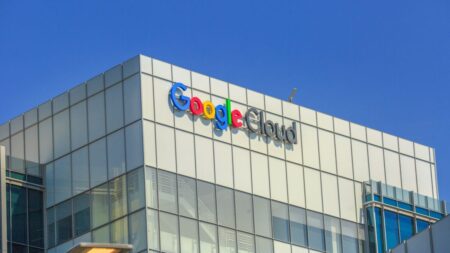As a startup founder and a digital native, I gravitate towards the long-term view. I don’t get worked up by quadrants and quarterly results; rather, I try to find long-term trends that will define technology, business, media, and culture for many years to come.
With that being said, take this analysis on the impact of generative artificial intelligence (AI) on the future of media consumption with a grain of salt — it’s meant to be somewhat speculative.
Generative AI Introduces Synthetic Media
Have you watched the Bandersnatch episode of the show Black Mirror on Netflix? It’s an interactive episode. Every so often, you — the viewer — are prompted to make a choice that guides the plot forward. Netflix reported there are five main endings and over one trillion possible paths the viewer can take through the experience. The experience of watching the episode was unlike any other. Even though many didn’t like it, it was undeniably more immersive and helped Black Mirror become one of Netflix’s most popular shows.
Bandersnatch was not created with generative AI. Netflix had to film several episode lengths of footage to accommodate all of the different paths. However, with generative AI programs that will exist in the not-too-distant future, we will be able to generate such footage without human intervention. Scott Belsky, co-founder of Behance, a platform for creative work, calls this ‘synthetic media.’

Which companies are the most important vendors in AI and hyperautomation? Check out the Acceleration Economy AI/Hyperautomation Top 10 Shortlist.
How Will Generative AI Redefine Media Experiences?
The implications of this are hard to imagine. The way we consume media will shift from passive to interactive. Different sources of intellectual property — ranging from social media posts to games to movies to music — will blend together to create experiences. And everyday audience members will join in the creative process.
Imagine you’re watching a movie. Halfway through the movie, your favorite character dies and you immediately feel less inclined to finish the film. What if you could prompt a generative AI model to recreate the rest of the movie with an alternate plotline, one in which that character doesn’t die? It will rearrange the plot to make sense. It will create new visuals and audio as well as generate new dialogue. Or perhaps, a prompt bubble will pop up halfway through the movie telling you what many other viewers had prompted and enjoyed as a result.
You can also go to a source like Promptbase and mix prompts to create your own movie entirely. While nascent, sources like Promptbase will increasingly define culture moving forward in the same ways the Internet does by giving a space for ideas to clash, media pieces to be remixed, and allowing anyone to contribute. We are already starting to see the inklings of the social aspect of generative AI with Midjourney’s website which has a community showcase and basic features like ranking generated images and an explore page.
Ultimately, generative AI is ushering in an era where media is no longer static. Right now, once a book is published, it is very difficult to change. And while you can often edit online content, the process of doing so by hand is cumbersome and infrequently done. Moving forward, generative AI can recreate, remix, and personalize media for the viewer (more on that in this analysis about the age of ‘smart information’).
Our interfaces and distribution channels haven’t yet evolved to support such a media environment. Perhaps Apple Vision Pro will. Or Netflix will adapt quickly enough around image-generation or video-generation models as they are released. It probably won’t be long until the first fully AI-generated Netflix show will come out. AI-generated music is already gaining popularity.
Implications for Businesses
While there aren’t any immediate actionable tasks to complete in preparation for a future of synthetic media, it may help guide your marketing or product strategy in the long term in the following ways:
- Perhaps we will see brand-oriented, fine-tuned generative AI models, where outputs — images, audio, text, video, or 3D — are designed in alignment with your brand’s aesthetic and values. This brand model may be accessed through a publicly available API similar to a brand kit, so creators can include a flavor of Apple, Lululemon, or Nike as they make media in conjunction with other models.
- Using this ‘brand model,’ you can quickly generate advertisements, customer service responses, internal or sales communications, and much more, rapidly and on-brand. It may also become critical to develop experiences like Bandersnatch for your target market to engage with, especially as we move into a world of spatial computing.
- ‘AI SEO’ — this is an unanswered question for me, but how important is your brand’s inclusion in training data? In the future, making sure your brand is included in the training data of models as people create with them may be similar to having a presence on Google Search through SEO.
All in all, how we consume information and be entertained is rapidly changing. Culture will no longer be driven by just us, but also by another semi-autonomous, semi-intelligent system. The brands and businesses that don’t fit into this emerging media landscape may get left behind.











